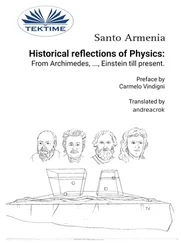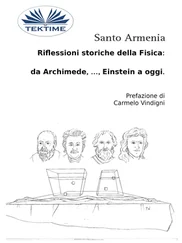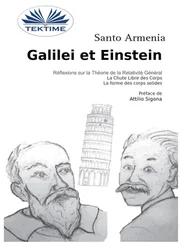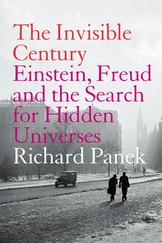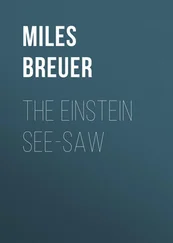“Just wait,” said Roger. “Then it gets into general relativity and cosmology. And then it comes to the punchline. George, the Snark isn’t a particle. It’s the mouth of a wormhole!”
“A wormhole?” George exclaimed. “Do you mean an Einstein-Rosen bridge?” He paused, struggling to recall the concept. “That can’t be right, Roger. When I studied general relativity at MIT, my prof was very fond of the idea of Einstein’s bridges, of curving space into a shortcut between two distant locations.
“But, as I recall, the things are dynamically unstable. They have the annoying tendency of winking out of existence so rapidly that one can’t even shoot a photon through. And besides, an Einstein-Rosen bridge should have a lot of space curvature and a mass comparable to a black hole, shouldn’t it?”
Roger laughed. “You were at MIT a while back, my friend. In the late ’80s Kip Thorne at Cal Tech discovered that, theoretically at least, a wormhole can be kept open and stabilized in several ways, all involving a bit of negative mass-energy. And as for the wormhole mass, it can be anything from a Planck mass upward. A Planck mass is only a microgram. I don’t think you know for sure that your Snark isn’t that massive.”
“A microgram?” said George. “That’s much too large. If it started at 2 percent of the speed of light, it would never have come to rest in the detector.”
“Perhaps the chaps on the other end helped to stop it,” Roger said. “Perhaps that’s what all of those jets were accomplishing.” George could imagine Roger’s grin.
“Does the message say where they are? Where the other end of the bridge is located?” George asked.
“Yes,” said Roger. George waited, but Roger said nothing else. He seemed to be playing for dramatic effect.
“So where are they? Is it a nearby star system? How many light-years?” Damn the man and his cute games, George thought.
“It’s not that simple,” Roger said quietly.
“What do you mean, it’s not that simple?” George was growing exasperated. “Roger, where in hell are they?”
“Not in hell,” Roger said. “A place that’s harder to reach than that. They’re in another universe, George.”
June 21, 2004 June 15,1992
The truth is, I don’t think there is a single person in this body who has the scientific background to know for sure whether [the SSC] is the greatest investment ever or the worst…
— CONGRESSMAN NEWT GINGRICH (R.-GEORGIA)
June 20,1992
High-energy research with particle accelerators has resulted and will result in plastics for medical use, solutions for DNA research and… maybe even for AIDS… nuclear waste disposal… pollutant removal…, location of oil deposits, creation of integrated circuits… studies of water tables… cryogenic engineering, tumor and body chemistry detection… ultra-fast computers.. and lots, lots more…”
— CONGRESSMAN BOB LIVINGSTON (R.-LOUISANA)
They have already, as a result of this program, developed cancer technology, developed treatment of tumors, developed advanced plastics that can be used in hospitals to reduce hazardous wastes.. The SSC is almost driving supercomputer technology, and supercomputers are what has made the United States an advanced technology [leader] in lots of areas.
— CONGRESSMAN SAM JOHNSON (R.-TEXAS)
What will happen once [the SSC] is finally completed? It deals with compressed energy. Scientists say they will be able to have enough energy to run an automobile.. In the medical profession, they will have a machine that [can] find any tumors or cancer in your body, never using a knife.
— CONGRESSMAN BILL SARPALIUS (D.-TEXAS)
THE TIME HAD PASSED SO RAPIDLY. ALICE COULDN’T quite believe that it had only been nine days since they had isolated the Snark. She recalled how George had commandeered a new laboratory room for them to work in and set up the recording and display hardware, how Roger had quickly scanned electronic conference proceedings, identified SETI experts on alien contact, and persuaded them to come to the laboratory, how the subtleties of the Snark’s pictorial messages had slowly been decoded. It seemed like months of events compressed into a handful of days.
She looked around SSC’s large lecture theater. It was absolutely packed. Alice suspected that its occupancy probably exceeded the fire code limit by 25 percent. The front row was occupied by the laboratory hierarchy, with Roy Schwitters, the SSC director, seated in the center. Jake Wang sat immediately to his left and occasionally delivered a whispered comment in the director’s ear. Also scattered along the first and second rows were the group leaders, Nobel laureates, and distinguished physicists that Alice had come to know and recognize in the past two weeks.
George had wanted Alice, as a participant in the Snark discovery, to sit on the front row also, but as a reporter she had preferred to sit halfway back in the lecture theater, where she could experience the reactions of the audience around her. She had arrived forty minutes before the seminar was scheduled to begin, and she was glad that she had. Late-arriving graduate students and others sat on the floors, filling the aisles and the space on the floor in front of the first row of seats. Both walls were lined with remotes. Alice had heard from some of the late arrivals that all the telepresence units and couches in the laboratory had been commandeered for the special seminar, bringing all interactive data analysis at the SSC to a dead stop.
George had been speaking for over half an hour and was now getting to the final conclusions of his talk, which had been designed to provide an overview of the past week’s work on the Snark. The seminar schedule, projected at the beginning, had indicated that George would speak first for forty-five minutes, followed by a question period and a break, followed by thirty-minute talks by four other speakers. Roger Coulton, seated now at the far right of the front row next to his boss, Bert Barnes, would discuss the twelve Snark diagrams and their interpretation. Professor Angelo Axel, distinguished cosmologist from the University of Chicago, would discuss inflationary cosmology and bubble universes. Professor Rudyard Home of Cal Tech would discuss general relativity and quantum gravity as applied to stable microscopic wormholes. And Professor Wilson Mulligan, George’s friend from the University of Washington Astronomy Department and a longtime leader of SETI efforts in radio astronomy, would discuss strategies for establishing two-way contact using the Snark.
There had been some discussion of coupling the seminar to a press conference, but George had vetoed that idea, preferring to wait until the two-way contact attempt had been made. Alice was delighted with this decision. She had a major news scoop, the discovery of the Snark, ready to break to an unsuspecting world later this afternoon. Alice took digital camera shots of the arrangement on the front row and made detailed notes of everything. She was thinking of the news release, the Search article she would write on the Snark, and the popular-level science book that would follow it. The Snark was a historic event, and she was in a unique position to write its history.
George started his talk by projecting several multicolored and rotating views of the now-famous Snark event on the large computer-driven flatscreen at the front of the room. He mentioned several important features of the LEM detector that had been essential in discovering the event. He graphically traced the path of the Snark through the various layers of the detector, projecting diagrams that showed in detail the region where the Snark had stopped. He then described how he and Alice had come in the middle of the night and removed the scintillator bar containing the Snark from the LEM detector. He held up a unit like the one they had removed.
Читать дальше






